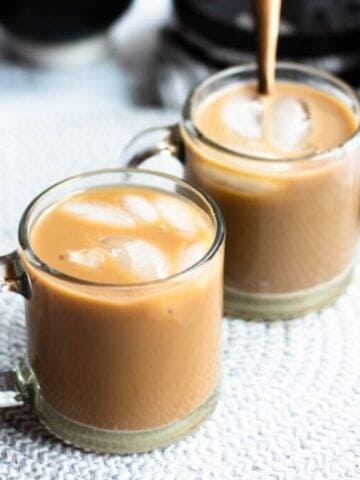Vietnam Country Introduction and Recipe
Fun Facts
-
Vietnam is the second-largest coffee producer in the world, famous for its strong and sweet iced coffee (cà phê sữa đá).
-
The country is shaped like an S along the eastern edge of Southeast Asia.
-
Motorbikes are the main mode of transportation — there are more motorbikes than people in some cities!
-
Vietnam has eight UNESCO World Heritage Sites, including Ha Long Bay and Hoi An Ancient Town.
-
The traditional Vietnamese hat, the nón lá (conical hat), is still widely worn, especially in rural areas.
About the Flag
The Vietnamese flag is simple yet powerful: a bright red background with a large yellow star in the center. The red symbolizes the bloodshed for independence, while the five points of the star represent the unity of workers, peasants, soldiers, intellectuals, and youth in building socialism.
Influence on the Food
Vietnamese cuisine has been shaped by centuries of Chinese influence, French colonization, and neighboring Southeast Asian cultures. Chinese cooking methods like stir-frying and noodle-making are prevalent, while French influence brought baguettes, coffee, and pâté, which were adapted into local dishes like bánh mì.
Flavors of the Food
Vietnamese food is celebrated for its freshness, balance, and vibrant flavors:
-
Herbs like mint, cilantro, and Thai basil are used generously.
-
Flavors are often a balance of sweet, sour, salty, bitter, and spicy in a single dish.
-
Fish sauce (nước mắm) is a critical seasoning, adding deep umami.
-
Dishes like pho (beef noodle soup) and bun cha (grilled pork with noodles) layer flavors with aromatic broths, grilled meats, and fresh herbs.
Food Culture
In Vietnam, food is more than sustenance — it’s community, history, and celebration. Meals are often eaten family-style, with several dishes shared at once. Street food culture is especially strong, and many people prefer eating outside at casual street stalls. Eating is also tied to the seasons and geography, with noticeable differences between northern, central, and southern Vietnamese cooking.
Dining Style
Vietnamese dining is typically casual, communal, and vibrant. A typical meal includes a balance of a main dish, a vegetable side, rice, and soup. Meals are usually enjoyed with chopsticks and a soup spoon. Sharing is the norm, and dishes are served at the center of the table. Meals are often lively, with friends and family chatting and enjoying a wide variety of dishes in a relaxed setting.


